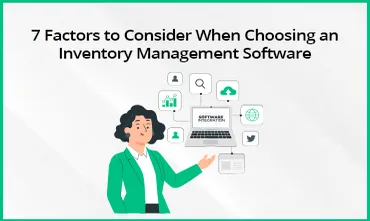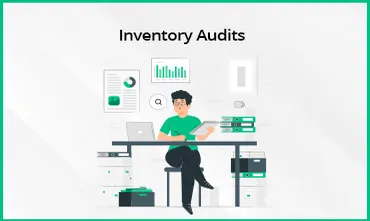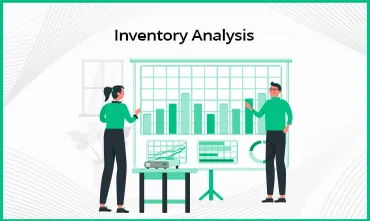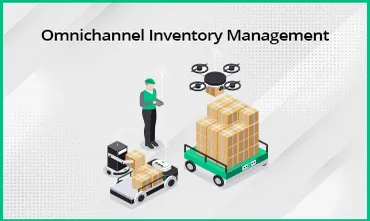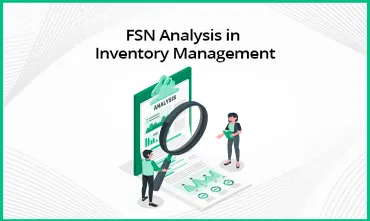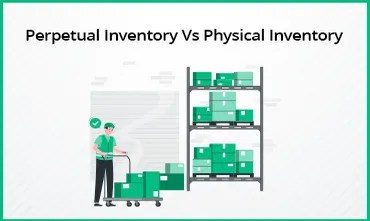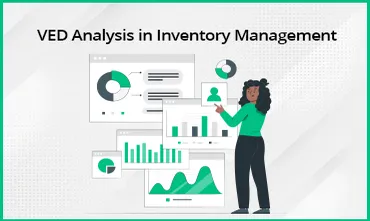Omnichannel inventory management is a must-have approach for manufacturers in this digital world. It is the key to maintaining better vendor service and managing inventory levels to fulfil timely demands. In this article, you will understand omnichannel inventory management and how it works to create a better brand image.
What is Omnichannel inventory management?
Omnichannel inventory management is an important technique that involves high-level vendor interactions. It helps manufacturers check and manage inventory across every channel they use. It offers real-time and accurate data to maintain better vendor service. All these features make omnichannel inventory management a must-have for businesses.
The Omnichannel management process gives structure to all operations. Vendors can enjoy a cost-saving experience and remove any problem that comes their way in inventory management. With the Internet of Things(IoT) development, Omnichannel inventory management has become an important part of the manufacturing industry.
How does an Omnichannel inventory management system work?
Omnichannel inventory management is a system that manufacturing businesses use to integrate various processes to serve vendor needs. With real-time visible inventory, businesses can easily understand their available stocks and act accordingly.
With omnichannel management, businesses can have a proper strategy and easily avoid overstocking and stockouts. Interconnected channels guarantee a better vendor experience and maintain vendors' loyalty toward the manufacturer.
Importance of Omnichannel inventory management
Omnichannel inventory is very important for a smooth production process. Here are some reasons that explain why it is important:
1. Fulfill Vendor Experience: With better vendor service and unified experience, omnichannel management is a must-have technology for manufacturing businesses. Vendors can order and receive whatever they need, and businesses can fulfil demand with real-time information about inventory availability.
2. Improves Inventory level: Multiple-channel inventory management can be complex, so omnichannel inventory helps prepare items as per the demands. It reduces overstocking and stockouts with the help of sales history.
3. Effective Operations: Inventory management can cause mismanagement and be time-consuming. With the right technology, businesses can make operations between multiple channels successful.
4. Increase in Sales: Vendor satisfaction and loyalty can increase sales and revenue for manufacturers. A seamless experience for vendors can create trust and guarantee more revenue.
5. Increase in Vendor Loyalty: Vendor loyalty can help businesses win over any present competition. Omnichannel inventory management software can reduce competition and provide the best service to vendors.
Essential benefits of Omnichannel inventory management software
Omnichannel inventory management offers many important benefits to manufacturing businesses. Here are some of the benefits:
- Improved Vendor Satisfaction: The most important benefit of the omnichannel order management approach is meeting vendors' demands. It guarantees vendor satisfaction.
- Reduced Costs: The omnichannel tracking can help businesses save time and money by interconnecting all production processes in the supply chain.
- Increased Sales: Vendor satisfaction can guarantee better sales and increase revenue through improved experience.
- Improved Performance: Businesses can improve their overall performance by reducing the need to track inventory levels across multiple channels manually.
Omnichannel vs Multichannel Inventory Management System
Multichannel inventory management is a system in which a single channel sells items through multiple retailers. Multichannel is a system in which a business connects with vendors one at a time.
On the other hand, omnichannel inventory management is independent of the number of retailers or channels. It is all about vendor experience and meeting their demand. If all shopping processes are interconnected, it represents an omnichannel inventory management technique. Effective operations and demand management are possible only through omni-channel systems.
Challenges of Omnichannel Inventory Management
The Omnichannel Inventory approach can become challenging in some situations. Here are some of the challenges that come with it:
- Combing Systems: An omnichannel strategy can combine different sales, inventory, and supply chain management systems in one channel. But this can also result in increasing complexity of the whole procedure. Manufacturers using various systems for different areas might need help with omnichannel inventory management.
- Cost Management: Inaccurate data in inventory management can result in overstocking of goods. As a result, inventory costs could also rise, and more planning may be required. With the right strategy, interacting with multiple vendors one by one is simple and cost-effective.
- Better Control: Vendors' demands are undependable and might shift as per their liking. Maintaining control across inventory management is a challenge. Using a simple inventory management strategy that can quickly respond to these changing demands is helpful.
- Streams Management: Most businesses try to maintain a single stream of inventory management, but a combination of streams is required with time. With focused inventory management, you can develop a better management process.
- Forecasting Demands: Predicting vendor demand takes time and effort. With the right technology, businesses can deliver vendors properly. Sales history and other prediction tools can help maintain inventory per future demands.
5 Strategies to improve Omnichannel inventory management
To perform inventory management properly, businesses must prepare the right process strategy. Here are some basic inventory management strategies companies might follow:
- Supply Chain Integration: The best way to improve vendor satisfaction is through connectivity. Better connectivity is possible through an omnichannel approach.
- Visibility: Better visibility helps in better demand management. Manufacturers can understand the availability of inventory items and manage the stocks accordingly.
- Return Policies: Most vendors find it difficult to trust businesses that do not have a return policy. It maintains a fair policy for consumers needing help finding the product worth their money.
- Stock Inventory Across Locations: Better connectivity involves better distribution centres. Stocky inventory across locations can improve distribution and warehousing for the manufacturer.
- Vendor Satisfaction: The most important aspect of a business is vendor satisfaction. With omnichannel inventory, vendor demands are met and delivered on time.
Things to consider before opting for an Omnichannel inventory management solution
One must check some details before performing the right plan for your business operations. Here is a list of things to take care of:
- Checking Inventory: The first step is to take a good look at the available inventory. It will help you understand how to proceed to the next step.
- Research Omnichannel Businesses: The next step is to research other businesses that use an omnichannel approach. This way, you can compare how similar or different your business is from theirs.
- Better Vendor Experience: Vendor Experience must be your priority. It can help create a brand image for your business.
What is the future of Omnichannel inventory management?
Inventory visibility and vendor satisfaction have made omnichannel inventory management necessary for future manufacturers. Businesses today must understand how vendor experience helps increase revenue and create a brand image for them. You must manage your inventory to stay ahead of the competition, especially in the competitive manufacturing industry. This is regardless of how and where you're selling.
Transform Inventory Management With TranZact
TranZact is a tool for small manufacturing businesses to help them go digital. With omnichannel inventory management, businesses can maintain online and offline presence. With TranZact, manufacturers can maintain inventory items and manage overall operations better. Vendor experience can become easy and worry-free with the right technology. Omnichannel is a solution for all your inventory management problems.
FAQs on Omnichannel Inventory Management
1. What are the best practices for omnichannel inventory management?
The best practices for omnichannel inventory management involve communication between distribution centres, vendor satisfaction measures, and the availability of important items. With better execution of these practices, businesses can increase revenue and create a vendor-friendly environment.
2. What is the best way to manage inventory?
The best way to manage inventory is to use the latest technology, such as the omnichannel approach. Businesses can use warehouse management and inventory tools to manage inventory better.
3. What is omnichannel in the supply chain?
Omnichannel in supply chain management is the approach that interconnects different processes and improves the vendor experience. A successful demand fulfilment can make a business successful.
4. What does omnichannel mean?
Omnichannel is the system that connects all production processes until it reaches the vendor. It can include multi-channel or different retailers a product goes through while processing.
5. What are the benefits of omnichannel inventory management?
The omnichannel inventory management is a great way to check inventory management systems. It can help manufacturers avoid problems like overselling, excess stock, and other warehouse management issues.
6. What is the one disadvantage of omnichannel management?
Omnichannel management has particular challenges, including large investments and the effort required to make things work in the manufacturing industry. It is complex for businesses to change their business processes to interconnect channels.



